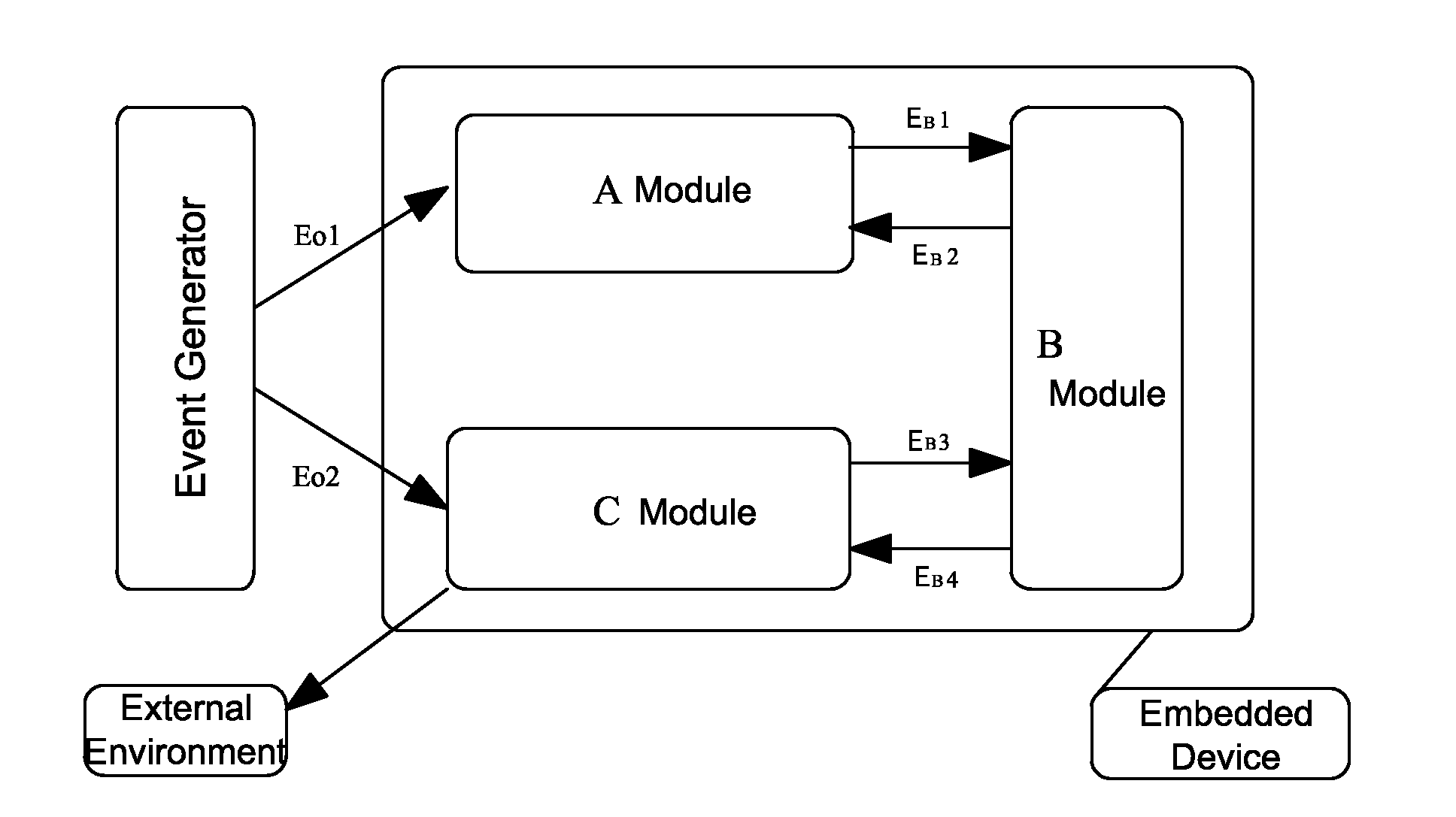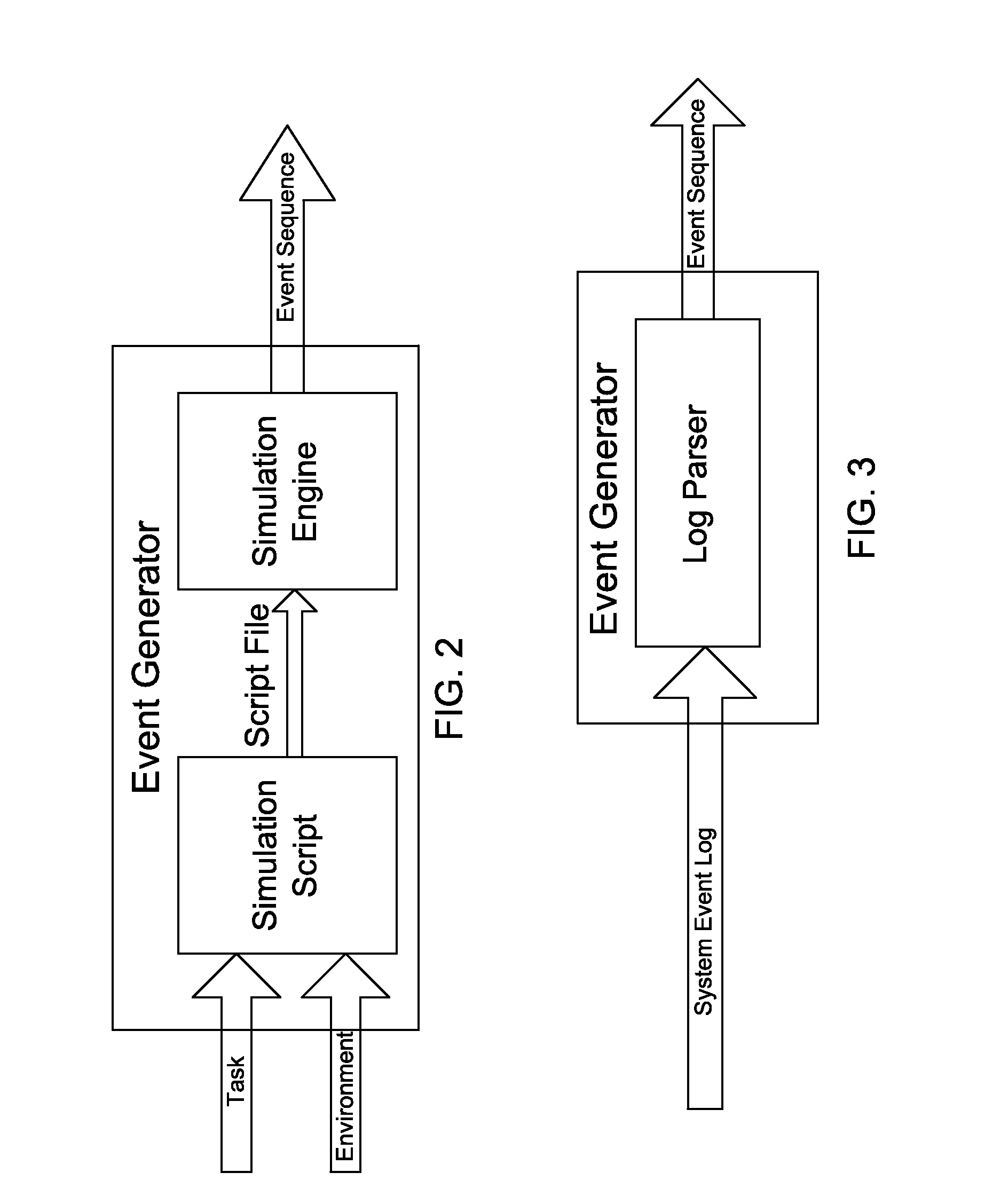Energy Consumption Simulation and Evaluation System for Embedded Device
a technology of energy consumption and simulation, applied in the field of embedded systems, can solve the problems of inability to meet the ever-growing computing requirements, the energy cost of the embedded system with active power supply has dramatically increased with the increase of energy prices, and achieves the effects of accelerating system development, enhancing design quality, and avoiding cognitive errors
- Summary
- Abstract
- Description
- Claims
- Application Information
AI Technical Summary
Benefits of technology
Problems solved by technology
Method used
Image
Examples
embodiment 1
[0037]This embodiment is illustrated in FIG. 1 of the drawings. According to the energy consumption simulation and evaluation system for embedded device of this embodiment, the system includes a graphical configuration management module, an event generator, device energy consumption model building block, an AADL to GSPN model transformation module and a GSPN simulation module for device energy consumption model, wherein the graphical configuration management module is a graphical parameter configuration and input arrangement module for both the event generator and the device energy consumption model building block;
[0038]the device energy consumption model building block is arranged for obtaining the AADL description model for software and hardware components in the embedded system by utilizing the abstract description of the AADL system-level software and hardware based on the parameter configuration of the graphical configuration management module;
[0039]the event generator is arran...
embodiment 2
[0044]This embodiment is illustrated in FIG. 1 of the drawings and includes further description of the energy consumption simulation and evaluation system for embedded device of the embodiment 1. In this embodiment, the input parameters of the device energy consumption model building block includes software and hardware architecture of the embedded system, component finite state machine, system dispatch strategy, resource allocation strategy and energy optimization strategy.
[0045]A user can configure the embedded system according to actual situation or compare and analyze the design for optimal energy consumption. Based on the user profile, generate system data includes embedded device architecture, module states and energy consumption data, software and hardware configuration information of embedded device and task data of embedded device. General data can be generated as a template profile.
[0046]Different system configurations, different devices (or components) and different strat...
embodiment 3
Preferred Embodiment 3
[0058]This embodiment is illustrated in FIG. 2 of the drawings and includes further description of the energy consumption simulation and evaluation system for embedded device of the embodiment 1. In this embodiment, the event generator is arranged for simulating and generating energy-consuming event sequence which includes the steps of: utilizing an event generator engine by the simulation script which is generated according to the configuration parameters under the event generator policy of the embedded system; and obtaining the energy-consuming event sequence.
[0059]The simulation script for embedded system contains the policy configuration parameters of the event generator which includes wireless channel / network environment configuration parameters and workload type of the embedded system.
[0060]According to this embodiment, the event generator arranged for generating a time sequence is suitable for the embedded system whose generation of energy consumption se...
PUM
 Login to View More
Login to View More Abstract
Description
Claims
Application Information
 Login to View More
Login to View More - R&D
- Intellectual Property
- Life Sciences
- Materials
- Tech Scout
- Unparalleled Data Quality
- Higher Quality Content
- 60% Fewer Hallucinations
Browse by: Latest US Patents, China's latest patents, Technical Efficacy Thesaurus, Application Domain, Technology Topic, Popular Technical Reports.
© 2025 PatSnap. All rights reserved.Legal|Privacy policy|Modern Slavery Act Transparency Statement|Sitemap|About US| Contact US: help@patsnap.com



